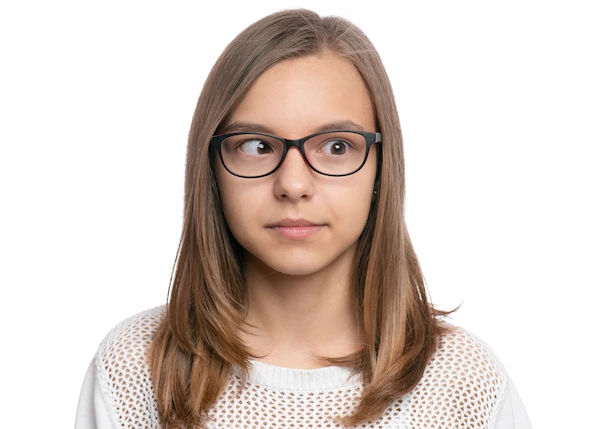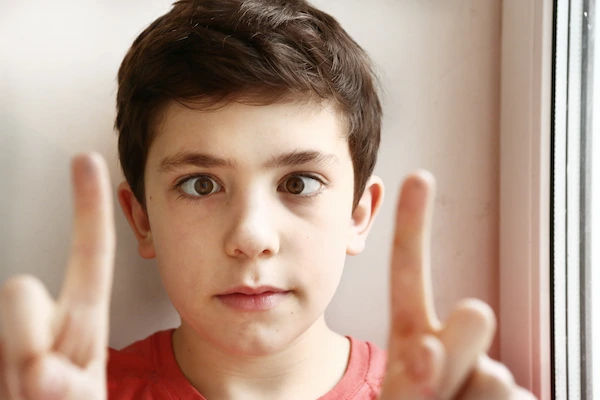Guide to Eye Care Ophthalmology/how Can Squint Be Corrected
Know about eye care and squint, what it is, types, risks, what happens in squint, signs, symptoms, diagnosis, treatment options, life after squint surgery and more.


Introduction
A “squint” (medical term: strabismus) means the eyes are misaligned—they don’t point in the same direction. That can blur vision, reduce depth perception, or cause double vision. It’s common in children and also occurs in adults after injury, nerve problems, or eye disease. The good news: modern eye care ophthalmology offers effective ways to correct a squint, from glasses and exercises to prisms, botulinum toxin (Botox), and precise surgery. If you’re wondering how squint can be corrected and what’s right for you or your child, along the way, we’ll share trusted insights from top ophthalmology sources and practical tips you won’t find in typical summaries. If symptoms persist, or you’re unsure where to start, you can consult a doctor online with Apollo24|7 for tailored advice and referrals.
Understanding Squint (Strabismus)
Strabismus is a misalignment of the eyes where they don’t point to the same object at the same time. One eye may turn inward (esotropia), outward (exotropia), or up/down (hypertropia/hypotropia). Misalignment can be constant or intermittent. In children, the brain may “ignore” one eye to avoid double vision, which can lead to amblyopia (reduced vision) if not treated early. Adults are less likely to suppress; instead, they often experience double vision (diplopia), affecting driving, reading, or work.
Consult a Top Ophthalmologist for Personalised Advice
Signs and symptoms to watch for
The signs and symptoms include:
- The eye turns noticeable in photos or when tired
- Frequent closing of one eye, head tilting, or squinting
- Complaints of double vision or eyestrain
- Poor depth perception or clumsiness in kids
Common types: esotropia, exotropia, vertical strabismus
- Esotropia: Often shows in infancy or early childhood; accommodative esotropia is linked to farsightedness and can
improve with glasses. - Exotropia: Intermittent exotropia can be more obvious during distance viewing or fatigue.
- Vertical deviations: May follow nerve palsies, trauma, or thyroid eye disease in adults [2].
Squint vs lazy eye (amblyopia)—how they differ?
A squint describes alignment. Amblyopia is reduced vision in an otherwise healthy eye due to the brain favouring the other eye during early development. Children with a squint have a higher risk of amblyopia; timely patching or atropine drops can restore vision while alignment is addressed. Unique insight: For many parents, the “visible turn” feels most urgent, but restoring vision in the weaker eye during the critical period is often the first priority; alignment and appearance then follow with glasses, exercises, or surgery.
Causes and Risk Factors Across Ages
Causes in children
- Refractive errors: Farsightedness can trigger accommodative esotropia; glasses reduce focusing effort and eye crossing.
- Developmental: Infantile esotropia typically emerges by 6 months; early surgical alignment supports binocular vision development.
- Genetics: Family history raises risk; twin and familial studies show a heritable component.
Causes in adults
- Nerve palsies (III, IV, VI): Can arise after diabetes, hypertension, viral illness, or head trauma; often cause sudden
double vision. - Thyroid eye disease: Inflamed eye muscles restrict movement, creating vertical or horizontal diplopia.
- Stroke or brain tumours: New double vision or an eye turn with neurologic symptoms warrants urgent evaluation
- Decompensation: An intermittent childhood squint can worsen in adulthood with fatigue or illness.
Who is at higher risk
- Premature birth, low birth weight
- Neurodevelopmental conditions (e.g., Down syndrome, cerebral palsy)
- Significant refractive error (farsightedness, anisometropia)
- Family history of strabismus or amblyopia
Diagnosis and When to Seek Care
Eye tests you can expect
- Visual acuity: Age-appropriate charts to detect amblyopia.
- Cover/uncover and alternate cover tests: Reveal tropias (manifest squints) and phorias (latent deviations) by observing eye refixation.
- Corneal light reflex (Hirschberg) and Krimsky tests: Estimate alignment in infants/toddlers.
- Prism and alternate cover test: Quantifies deviation in prism diopters—essential for planning prisms or surgery.
- Binocular function: Stereopsis tests (e.g., Randot) to measure depth perception.
Imaging and medical workups
Most children with stable, long‑standing strabismus don’t need imaging. Adults with new‑onset double vision, pain, or
neurological signs may need MRI/CT, blood tests (thyroid function), or diabetes evaluation to identify underlying
causes. If thyroid eye disease is suspected, thyroid profile testing helps guide care—Apollo24|7 offers convenient home
collection for thyroid labs.
When to see a specialist: urgent red flags
- Any constant eye turn beyond 3–4 months of age
- Sudden double vision in adults
- Eye misalignment with headache, droopy eyelid, weakness, or trauma
- Persistent symptoms beyond two weeks
If symptoms persist beyond two weeks, consult a doctor online with Apollo24|7 for further evaluation or book a
physical visit to a pediatric or strabismus ophthalmologist.
Non-Surgical Treatments That Work
Glasses and prisms
- Glasses: For accommodative esotropia, full hyperopic correction can straighten the eyes without surgery. Facials may
help convergence-related issues in select cases. - Prisms: Built into glasses to merge images and reduce double vision, especially in adults with small or stable deviations.
Long‑tail keyword: prisms for double vision.
Patching and atropine for amblyopia
- Patching the stronger eye encourages the weaker eye to develop vision. Regimens vary from 2–6 hours/day, depending
on severity and age. - Atropine penalization: Drops blur the stronger eye for near work, often better tolerated by young children. Addressing amblyopia early maximises the brain’s ability to develop binocular vision.
Orthoptics and vision therapy—who benefits
- Convergence insufficiency responds to structured near-point exercises; good evidence exists for symptom relief.
- Intermittent exotropia exercises: Evidence is mixed; some patients gain control, but many still need surgery for lasting
alignment.
Botulinum toxin (Botox) for specific strabismus
- Botox weakens an overacting muscle temporarily, allowing alignment to recalibrate. It’s useful in acute sixth nerve
palsy or some infantile cases to defer or avoid surgery. - Results vary; repeated injections may be needed.
Squint Surgery: Techniques, Safety, Outcomes
How surgery works
- The surgeon adjusts eye muscle length or position to rebalance the pull. Common strategies include recession
(weakening) and resection (strengthening). - Adjustable sutures in cooperative adults allow fine-tuning alignment shortly after surgery, particularly helpful for
complex, long-standing, or paralytic strabismus.
Safety, anaesthesia, and recovery timeline
- Children undergo general anaesthesia; adults often receive general or monitored anaesthesia care. The procedure is external—on the white of the eye—not inside the eyeball.
- Recovery: Expect redness, scratchy sensation, and light sensitivity for 1–2 weeks; many return to school/work within a few days. Eye alignment may “settle” over several weeks.
- Risks: Under- or overcorrection, need for reoperation, infection (rare), scarring, or transient double vision as the brain adapts.
Living With and Beyond Squint: Recovery, Lifestyle, Prevention
The tips include:
Home care, patching adherence, screens and habits
- Make patching playful: Use a reward chart, schedule patching during engaging activities, or involve both caregiver and
child in “eye workout” games. - The 20-20-20 rule: Every 20 minutes, look 20 feet away for 20 seconds—reduces eyestrain and may help control
intermittent deviations during near tasks. - Follow drops, ointments, and activity restrictions as advised to speed healing post‑op; most patients can resume gentle
activities within days.
Early detection and prevention strategies
- Pediatric vision screening at ages 3–5 detects many treatable problems; earlier if you notice a constant eye turn.
- Correct refractive errors promptly and encourage breaks during prolonged near work—especially for children with
intermittent exotropia or convergence problems. - After a stroke or head injury, new double vision warrants prompt assessment; early prisms or occlusion can reduce falls
risk.
Conclusion
Squint is more than a cosmetic issue—it affects how the brain combines images from both eyes, influences depth perception, and can cause double vision. Fortunately, modern eye care ophthalmology offers a spectrum of proven treatments to correct a squint. Young children often improve dramatically with the right glasses and timely amblyopia therapy, while adults benefit from prisms or surgery that aligns the eyes and expands single‑vision fields. For many, the confidence and functional gains are life‑changing. The most effective plan starts with an accurate diagnosis: identifying the type of strabismus, checking for amblyopia, measuring the deviation precisely, and ruling out underlying causes when needed. Early help preserves options and improves results. If your condition does not improve after trying initial methods, book a physical visit to a doctor with Apollo24|7; or, if you need quick guidance on symptoms, consult a doctor online with Apollo24|7 to plan next steps.
Consult a Top Ophthalmologist for Personalised Advice
Consult a Top Ophthalmologist for Personalised Advice
Dr Santosh Ramchandani
Ophthalmologist
16 Years • MBBS MS OPTHALMOLOGY
Indore
Apollo Hospitals Vijay Nagar, Indore

Dr Ranojit Basu
Ophthalmologist
24 Years • MBBS, DNB Ophthalmology, Diploma in Ophthalmic Medicine and. Surgery
Kolkata
Titanium Eye Care, Kolkata

Dr. Indumathy Ramachandran
Ophthalmologist
20 Years • MBBS, DO (CMC, Vellore ), DNB (Ophthal), FICO ( Cambridge, UK ) Cataract, Cornea and Laser Refractive Surgeon
Hyderabad
Apollo Hospitals Jubilee Hills, Hyderabad
(50+ Patients)

Dr. Rajeev Gupta
Ophthalmologist
24 Years • MBBS, MS (Ophthalmology)
Ghaziabad
Om Eye & Gynae Centre, Ghaziabad

Dr. Vyankatesh Pharande
Ophthalmologist
25 Years • MBBS, MS (Ophthalmology )
Pune
PHARANDE EYE HOSPITAL & PHACO CENTER, Pune
Consult a Top Ophthalmologist for Personalised Advice
Dr Santosh Ramchandani
Ophthalmologist
16 Years • MBBS MS OPTHALMOLOGY
Indore
Apollo Hospitals Vijay Nagar, Indore

Dr Ranojit Basu
Ophthalmologist
24 Years • MBBS, DNB Ophthalmology, Diploma in Ophthalmic Medicine and. Surgery
Kolkata
Titanium Eye Care, Kolkata

Dr. Indumathy Ramachandran
Ophthalmologist
20 Years • MBBS, DO (CMC, Vellore ), DNB (Ophthal), FICO ( Cambridge, UK ) Cataract, Cornea and Laser Refractive Surgeon
Hyderabad
Apollo Hospitals Jubilee Hills, Hyderabad
(50+ Patients)

Dr. Rajeev Gupta
Ophthalmologist
24 Years • MBBS, MS (Ophthalmology)
Ghaziabad
Om Eye & Gynae Centre, Ghaziabad

Dr. Vyankatesh Pharande
Ophthalmologist
25 Years • MBBS, MS (Ophthalmology )
Pune
PHARANDE EYE HOSPITAL & PHACO CENTER, Pune
More articles from Strabismus
Frequently Asked Questions
1) What is the best age for child squint treatment?
Many children benefit from early treatment glasses as soon as accommodative esotropia is identified, and surgery for infantile esotropia is often performed within the first 1–2 years to support binocular development. Ask a pediatric ophthalmologist for timing.
2) Can a squint be corrected without surgery?
Yes, glasses, prisms, patching, orthoptics, and sometimes Botox for strabismus can help. But moderate to large, constant deviations often require surgery for lasting alignment.
3) What is the recovery time after eye alignment surgery?
Most people return to school or work in 2–5 days; redness and mild discomfort last 1–2 weeks. Final alignment and any double vision adaptation can take several weeks.
4) Do vision therapy or exercises cure intermittent exotropia?
Exercises can improve control in selected patients, especially convergence insufficiency. Evidence for curing intermittent exotropia is mixed; many eventually need surgery.
5) Is adult strabismus surgery worth it if I’ve had a squint for years?
Often yes. Adults report improved double vision, head posture, field of single vision, and quality of life. Discuss risks, benefits, and the strabismus surgery success rate for your specific case.

.webp)
